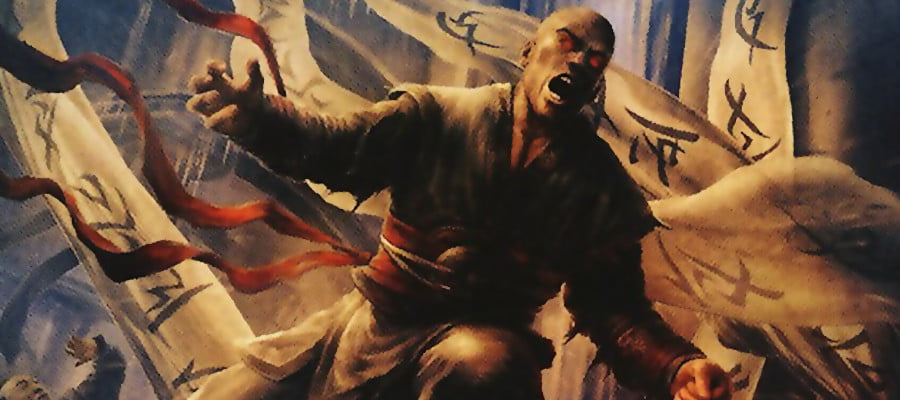Oh boy you know what’s the most broken spell available in 3rd edition D&D well now you mention it it’s a contentious slot because there are a lot of spells that are really, really broken and third edition had a lot of them flying around but when it got broken you kind of had to start in the core rulebook and see the things that you’d wind up seeing used all the time and nothing was really ever going to wind up being as broken as this one it’s haste it’s haste look it’s obvious I’m talking about haste haste was so very goddamn broken in third edition D&D.

If you’ve played D&D 3rd edition and its family type of games, odds are really good you may remember haste as being ‘important’ but not that big a deal. Haste is, in 3.5, a really important, very valuable spell; it’s a great reason to have transmutation spells available to you, because at the level you get it (5, for wizards), it can represent a big upgrade in your damage output. 3.5 Haste is a group buff power, and everyone affected by it has a movement speed upgrade, but also when they make a full attack action, they get an additional attack at their highest bonus. At level 5, when you get it, that’s effectively doubling the attack output of every melee character. If they’re dual wielding, okay, you only increase it by 50% but that’s still a lot for a single spell.
Back in 3rd edition, though, Haste was a very different spell. True to the spirit of it, but also, not the same thing at all. See, back in 3rd edition, Hasten was a single-target buff that lasted for 1 round per caster level (so, 5 when you got it). When you used it, it granted you +4 to your armour class, because you were moving so fast, and a partial action. This action could be used after or before your normal action, and that meant that haste, on the turn you used it was -1 action for +1 action; so it was basically neutral…
… and then, every turn thereafter, you had two actions. Attack-wise, you could use your partial action to do partial charges. Meaning that, if you’ve got haste, the duration of that haste was basically the equivalent of pounce and a bonus attack. That’s a lot of extra damage on the person who casts Haste, which you know, isn’t that great. Of course, clerics could get that, with the Celerity Prestige Domain (but let’s not talk about prestige domains today, they are silly). But let’s ignore that for now, this isn’t the important thing. Using haste for melee is really strong, to the point where items that let you get single turns of haste are highly desireable magic items.
But.
But.
You can use that extra partial action to cast another spell.
And suddenly, this spell represents double spelling every turn. And at level 5, you may think ‘hey, that runs you out of spells really quick’ and that’s true, but if you’re spelling twice as fast as any one else, you’re going to end fights faster and knock out problems faster. It’s an immense level of power when you remember that spells are designed to have impact enough to shape a whole turn, and then haste lets you cast two.

This is, honestly, kind of where a whole generation of Game Opinion Havers learned the term ‘action economy.’ In a game system where everyone had n actions, someone having n+1 actions is a big disruption, and when that someone is also built so that their actions are themselves, worth more than n actions every turn, you start multiplying that effect. The result is that haste was, for the whopping two years of 3.0 D&D, the conventional wisdom was that the most powerful thing you could do was be a wizard, and use haste to pump out broken spells.
And that’s not wrong.
The funny thing was that this illusion that wizards got haste, so they could use haste best, so the most powerful class was the wizard, but there were also available, in expansions like Defenders of the Faith and oh no look we’re at the prestige domains, and suddenly clerics could get access to haste. Turns out that? Everything the cleric could do that was just as busted? Suddenly also the cleric had haste too!
I don’t think anyone went out of their way to make haste overpowered, by the way. I think haste was a name of a spell from 2nd edition that was very good, and so there was a deliberate push to make the version in 3rd edition also very good. That wasn’t playtested to push it to its edge in 3rd editions first release, and a powerful spell got through. What was amazing then, however, were all the people arguing after that about whether or not it was reasonable.
It may not surprise you to hear this, but it seems that haste, as 3e designed it, was not a reasonable spell. It was too powerful, but because it was in the game to start with, there was a mindset that no, it had to be okay, and anything else it displaced, that was intentional, and the problems were all directly built out around that displacement!
Because the assumption was that the game as product was released to us ‘fine.’ That the game’s base version needed official errata (and it kind of did, for everyone to have a equal platform to talk about the game design). But it did mean that for anyone who wanted to address problems with the game, there was always a fundamentally reactive political body that wanted to assert fixing these problems was always, always going to against the idea that the game we bought was fine.
Even when it had Haste in it!